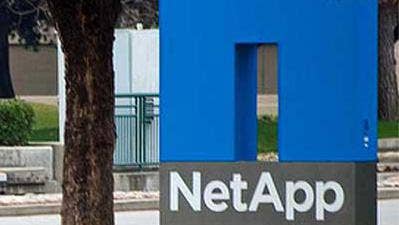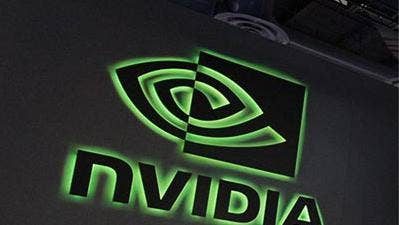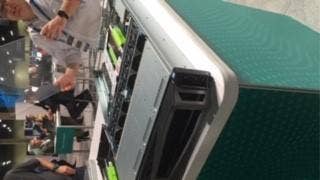NetApp CEO Kurian On HCI, Cloud, And Growth Prospects

Looking Past The Last Quarter
NetApp on Wednesday reported revenue growth slower than expected which, despite growing margins, gave pause to investors who responded after the release of the company's third quarter fiscal 2018 results by driving share prices downward.
NetApp CEO George Kurian blamed the revenue drop on what he said were macroeconomic factors outside the company's control. He argues that the company's focus on the types of technologies customers are investing in for future IT workloads -- all-flash storage, hyper-converged infrastructure, and hybrid and public clouds -- actually play into NetApp's strengths.
Kurian sat down with CRN after NetApp released its financials to discuss the company's place in the most important technology trends expected to impact clients going forward, along with the channel's role in those trends. For a look at how NetApp expects to regain momentum, turn the page.

So what happened in NetApp's third fiscal quarter?
We're a bit disappointed with top-line performance, but we beat on all the other key metrics: earnings per share, operating margin, and gross margin. And so we've got an expanding range of growth engines that are showing significant momentum.
What happened on the top-end? Revenue was up 2 percent over last year, but that was not enough for investors who really took it out on NetApp.
Our largest customers started to slow down purchasing behavior in January, which is the last month of our fiscal quarter, we believe in response to the uncertain macroeconomic environment. We did not see any change in competitive posture. We did not see any change in win rates. It was really just a general degree of higher caution in our largest customers who are exposed mostly to the global economy.

Is that on the commercial or government side?
Both private sector and government. I think in the government, the effects of the slowdown are not just directly in the public sector itself, but also in all of the people who are providers of services and equipment to the public sector. And so we sort of saw a ripple effect. And while we're hopeful it won't continue, it'll take time for the government to get back to its normal operating cadence. And so we're cautious in terms of the outlook as well.

NetApp's share price was down about 7 percent in after-hours trading. Why do you think investors were not happy with the results?
You'd have to ask our investors. We feel that we've controlled all of the factors that are within our control by disciplined operating performance. We are well-positioned in the three major market transitions: disk to flash, traditional IT to private cloud, and on-premises environments to hybrid cloud. If you look at our numbers from a gross margin standpoint and product revenue standpoint, we've grown steadily for about nine consecutive quarters. And in operating margins, we set a new record at NetApp in our 25-year history. This is the most profitable the company has ever been.
We feel good about controlling a lot of the elements in our control. And our innovation portfolio is rich. And the number of customers that are adopting broader parts of our portfolio is growing.

How are the key parts of NetApp's innovation portfolio doing?
[Flash storage] grew 19 percent year-over-year to $2.4 billion [annual run rate], continuing to show our differentiation. And we look forward to expanding on our momentum as NAND prices continue to be favorable over the next several quarters.
We saw a substantial acceleration in our private cloud solutions that show the differentiation of NetApp SolidFire hyper-converged and our object storage solutions to new environments. And we are beating first-generation HCI (hyper-converged infrastructure) players in a variety of dimensions.
Our public cloud solutions are right on the cusp of general availability. And from those customers that are in controlled production use cases with us, the feedback has been really strong. And so we're excited to be in general availability soon with the biggest hyperscalers in the world.
So, we're well set up. We're controlling the things that we can control, and we believe that we are extraordinarily well-positioned as the macro stabilizes with an expanding range of growth engines.

Has NetApp released its artificial intelligence platform that combines NetApp flash storage, Nvidia DGX, and Cisco networking?
It's available in the market. We work with Nvidia in multiple ways. We work with them in two flavors on-premises, with Ontap AI and FlexPod AI solutions which combine Nvidia computing cores with NetApp all-flash storage environments. We have Nvidia GPUs for VDI (virtual desktop infrastructure) use cases on NetApp HCI. And we are certified with Nvidia A.I. solutions on the public cloud so that customers can start their A.I. journey anywhere and use our technology across edge, core, and cloud. And that gives us the broadest and most differentiated solution portfolio alongside Nvidia and the A.I. business.
I see some really good wins outside of traditional IT and net-new buying centers for NetApp in data science, autonomous cars, vehicle automation, [those kinds] of use cases. We're encouraged at the momentum.
So all three of NetApp's Nvidia-related offerings are in production and in the hands of customers?
Yep. We can support customers in all three use cases today.

Has NetApp's HCI hyper-converged infrastructure offering picked up any significant market share yet?
We're starting to see good momentum. I think when you look at SolidFire [all-flash technology] and NetApp HCI, they offer a proven, enterprise-grade infrastructure that combines cloud-like experience with the ability to deploy complex mixed workload use cases. This quarter, for example, one of the world's leading investment management companies chose NetApp HCI over all the other leading competitors because of that particular capability, to scale compute and storage separately while providing end-to-end visibility and connectivity with the [NetApp] Data Fabric. We won at a large European university where we competed end-to-end on hyper-converged infrastructure against the two leading players in the market. We won against them on all the seven customer criteria. So we feel really good. We see expanded momentum, and as I said, we're controlling the things we can control. We are well-positioned across these three major market transitions. And we're looking forward to better visibility for our customers so that we can move forward with them on a broad range of dimensions.

You have used the term "growth engines" in referring to NetApp. What is NetApp doing for the channel with these growth engines?
All-flash storage systems, where customers are transitioning from disk-based to flash-based [storage]. We have for the channel in that area the Data Visionary loyalty program that helps [partners] expand their profitability and grow their businesses together with us. We recently rolled out an HCI rewards program, with a combination of SolidFire, NetApp HCI, and object storage building a really, really capable private cloud solution portfolio. And we have the Cloud First partner program where partners of NetApp who are also partners with the major hyperscalers can deploy cloud data services and combine our two offerings for customers. And so, we're also seeing the channel have a strong book of business with us and a growing momentum with us.

NetApp reported a 19-percent year-over-year growth in flash storage sales. That seems low for NetApp compared to recent quarters. Is that an unusual growth rate, or signs of things to come?
It's just a bigger book of business across a larger number of customers. In terms of sequential growth rates, you should expect us to have to deal with the law of large numbers.
We saw a little bit of caution in terms of customers where the amount of capacity they bought with every transaction was a little bit lower than in the past. That's I believe is due to the macroeconomic uncertainty. People are buying what they need.
So stay tuned. We're excited about where we are. We're controlling what we can. And we're positioning ourselves well to re-accelerate momentum as soon as the macro stabilizes.